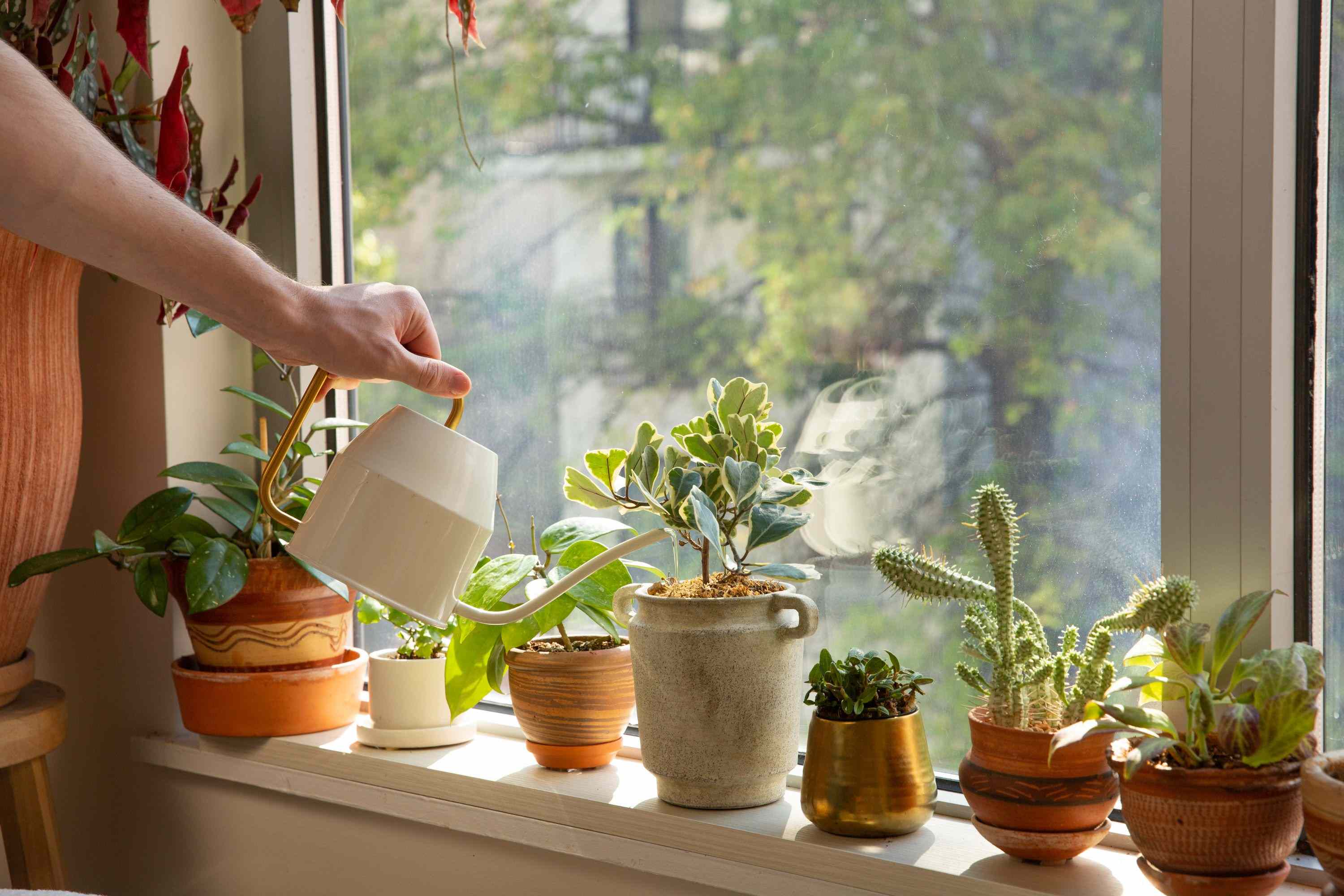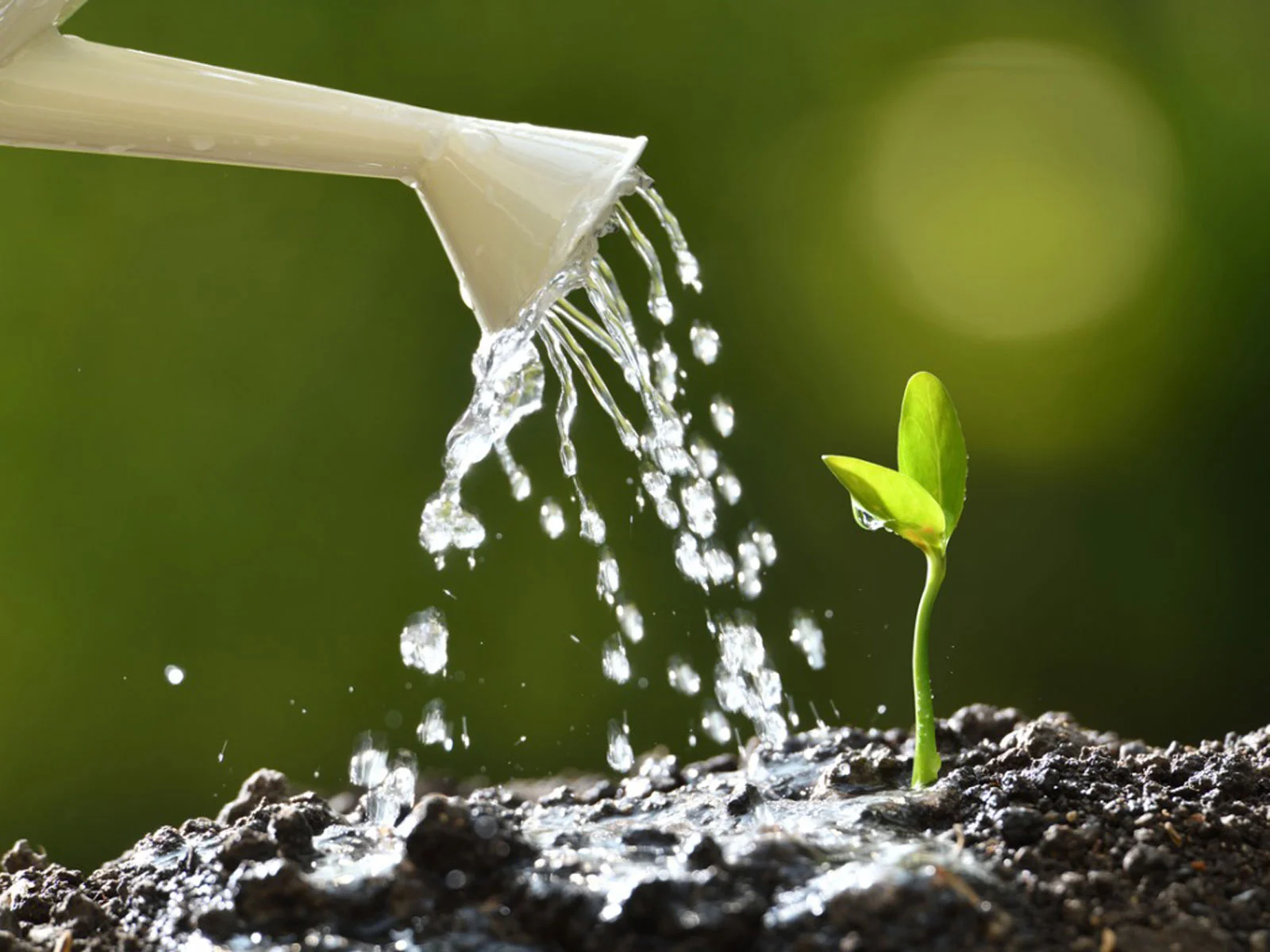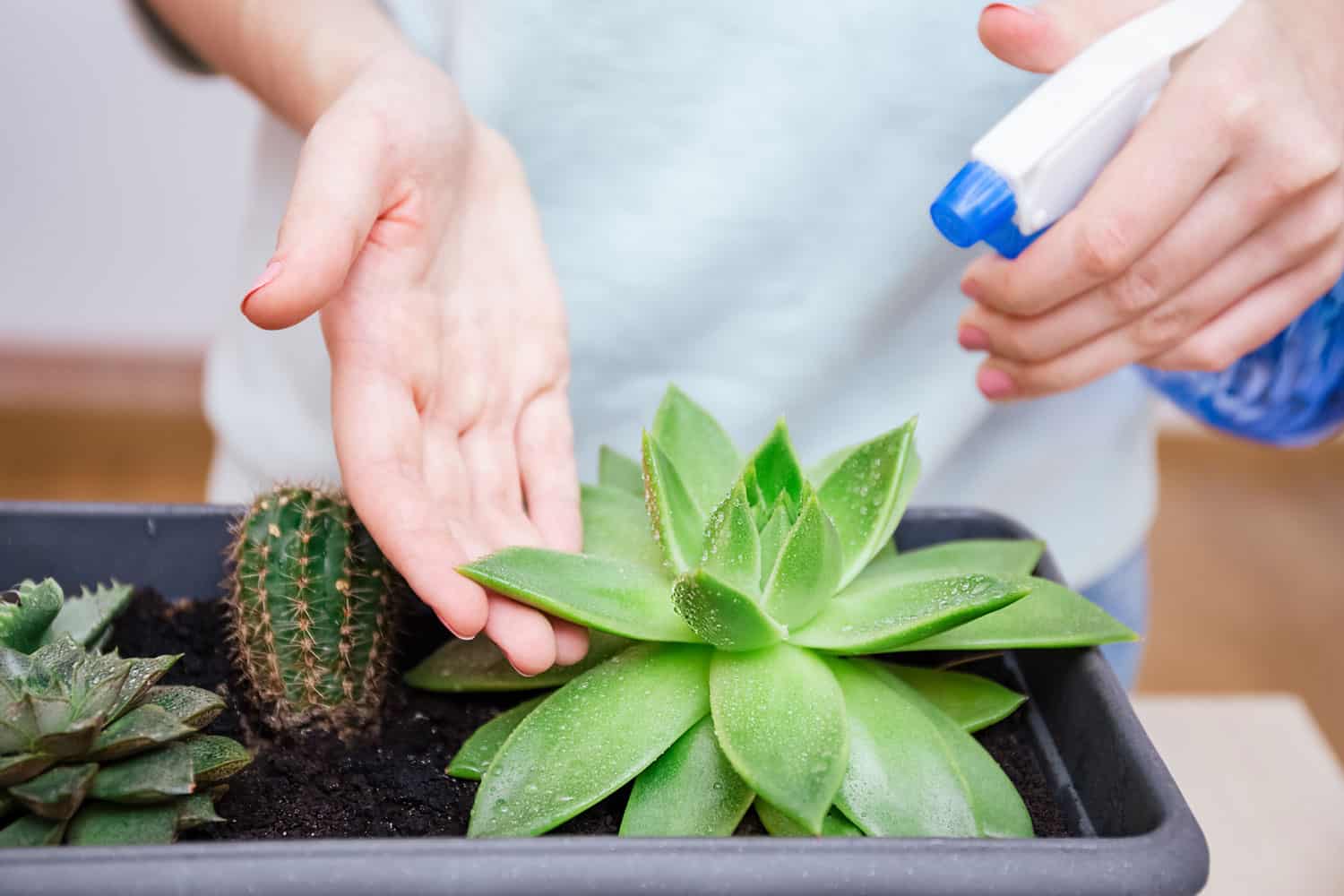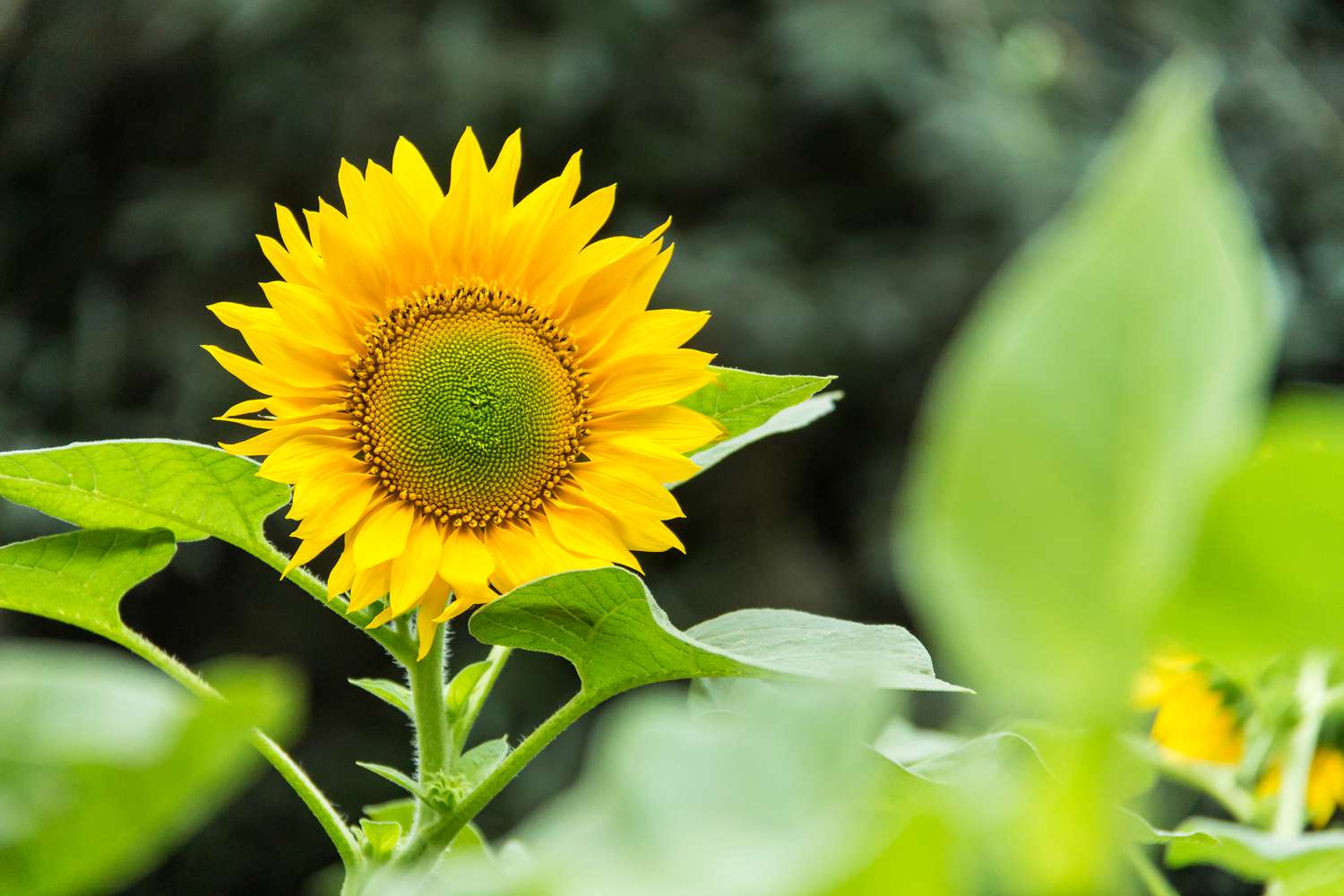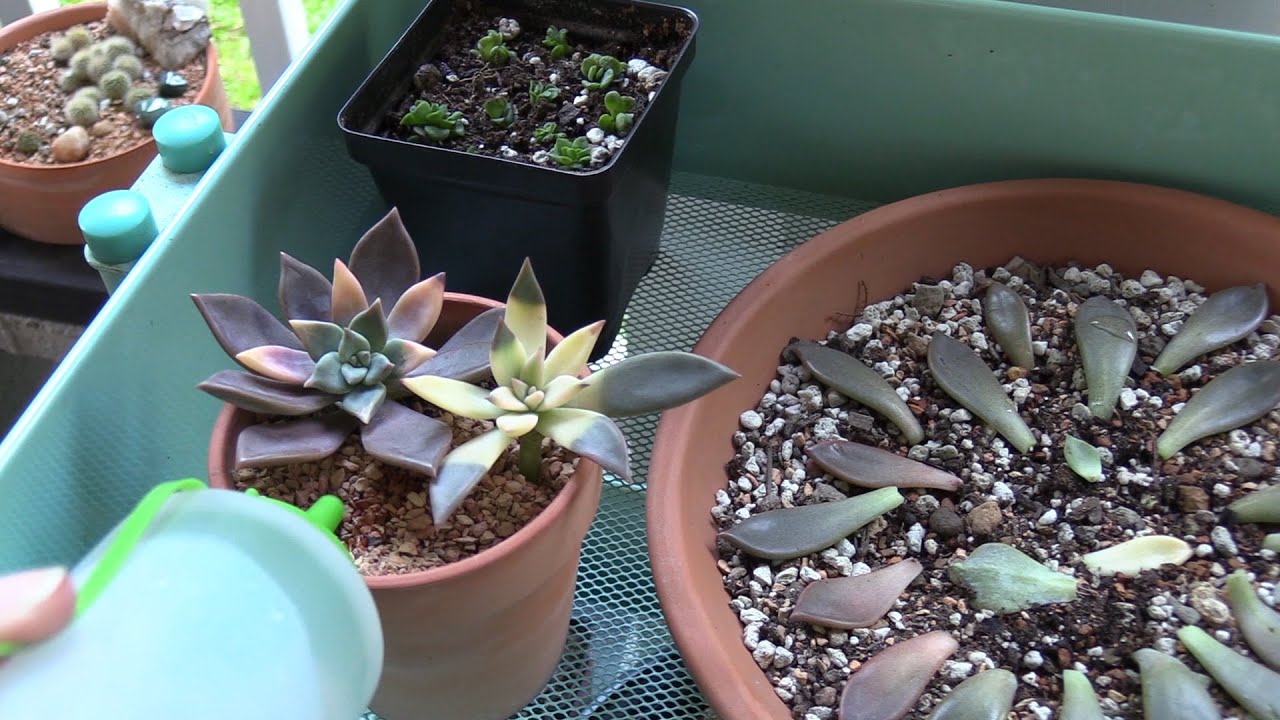Home>Gardening Techniques>Plant Care>How Often Should You Water Plants In Aeroponics


Plant Care
How Often Should You Water Plants In Aeroponics
Modified: January 22, 2024
Discover the best plant care tips for aeroponics. Learn how often you should water plants to ensure their health and growth.
(Many of the links in this article redirect to a specific reviewed product. Your purchase of these products through affiliate links helps to generate commission for Chicagolandgardening.com, at no extra cost. Learn more)
Table of Contents
Introduction
Welcome to the world of aeroponics, a revolutionary method of plant care that utilizes a nutrient-rich mist to grow plants without the use of soil. Unlike traditional gardening techniques, aeroponics allows for precise control over nutrient delivery and environmental conditions, resulting in faster growth, higher yields, and healthier plants. However, one crucial aspect of successful aeroponic gardening is proper watering.
Watering plants in aeroponics is different from watering plants in soil-based systems. Without soil to retain moisture, plants in aeroponics rely on regular misting to provide them with the water and nutrients they need to thrive. However, finding the right balance can be challenging, as overwatering or underwatering can have detrimental effects on plant growth. In this article, we will explore the importance of proper watering in aeroponics, factors that affect watering frequency, recommended watering schedules, signs of underwatering and overwatering, and tips for successful plant watering in aeroponics.
Whether you’re a seasoned aeroponic gardener or just getting started, understanding how often to water your plants is crucial for their overall health and productivity. By mastering the art of watering, you can ensure that your plants receive the perfect amount of moisture, leading to vibrant, thriving greenery in your aeroponic system.
Understanding Aeroponics
Aeroponics is a cutting-edge method of growing plants that eliminates the need for soil and instead relies on a nutrient-rich mist to deliver water and essential nutrients directly to the plant’s roots. Unlike hydroponics, which uses water as the growing medium, aeroponics suspends the plant’s roots in the air where they are regularly misted.
In an aeroponic system, plants are typically placed in net pots or specially designed holders, allowing the roots to be exposed to the air. A high-pressure misting system is used to spray a fine mist of water and nutrients onto the roots, creating an oxygen-rich environment that promotes healthy growth. This mist is much finer than what is used in other hydroponic systems, ensuring that the roots are adequately supplied with moisture and nutrients.
One of the primary benefits of aeroponics is that it provides plants with an abundance of oxygen. The suspended roots are constantly exposed to fresh air, allowing them to absorb higher levels of oxygen compared to traditional soil-based systems. This oxygen-rich environment facilitates optimal nutrient uptake, leading to faster growth and greater yields.
Additionally, aeroponics offers greater control over the growing environment. With the ability to regulate the misting frequency and nutrient concentration, gardeners can fine-tune the conditions to meet the specific needs of different plant varieties. This level of control allows for precise adjustments and the ability to grow a wide range of plants in a single system.
Moreover, aeroponics is a sustainable and water-efficient method of gardening. Since the misting system delivers water directly to the plant’s roots, there is minimal water wastage. The plants only absorb what they need, and any excess moisture can be recirculated within the system, reducing water consumption significantly.
Overall, aeroponics represents an innovative and efficient way to nurture plants. By harnessing the power of misting and creating an optimal growing environment, it offers numerous advantages for gardeners looking for a high-yield, low-maintenance gardening solution.
Importance of Proper Watering
Proper watering is crucial for the success of plants in aeroponics. Water serves as the primary vehicle for delivering essential nutrients to the roots, facilitating photosynthesis, and maintaining plant health. Understanding the importance of proper watering is key to ensuring optimal plant growth and preventing issues such as nutrient deficiencies, pests, and diseases.
One of the primary reasons why proper watering is essential is to provide plants with the right amount of moisture to support their physiological processes. In aeroponic systems, where plants are not grown in soil, the roots have limited access to water, making it important to provide a consistent supply. Insufficient water can lead to dehydration and stunted growth, while excess water can suffocate the roots and create a breeding ground for pathogens.
Additionally, proper watering helps maintain a balanced nutrient uptake. Since water carries essential nutrients from the misting system to the roots, ensuring a consistent water supply helps prevent nutrient deficiencies. Without adequate water, plants may not be able to absorb the nutrients they need, leading to impaired growth, yellowing leaves, and reduced overall vigor.
Proper watering also plays a crucial role in maintaining oxygen levels in the root zone. In aeroponics, the suspended roots are exposed to the air, allowing for increased oxygen uptake. However, if the root zone becomes waterlogged due to overwatering, oxygen availability can be compromised. Oxygen-deprived roots are more susceptible to diseases and root rot, which can quickly lead to plant decline or death.
Furthermore, watering correctly helps maintain the overall health and resilience of plants. By providing the right balance of moisture, plants are better equipped to withstand environmental stresses, such as high temperatures or low humidity. Water-deprived plants are more vulnerable to heat stress and wilting, while overwatered plants are more prone to root diseases and nutrient imbalances.
Overall, proper watering is essential for the overall well-being of plants in aeroponics. By providing adequate moisture, maintaining nutrient balance, and ensuring sufficient oxygen levels, gardeners can ensure healthier, more productive plants that thrive in their aeroponic systems.
Factors Affecting Watering Frequency
When it comes to watering plants in aeroponics, several factors influence the frequency at which you should water. Understanding these factors is crucial for finding the right balance and ensuring that your plants receive the optimal amount of moisture. Here are some key factors that can affect watering frequency in aeroponics:
- Plant Type: Different plant species have varying water requirements. Plants with large, lush foliage, such as lettuce or basil, typically require more frequent watering than plants with smaller leaves, like herbs or strawberries. It’s important to research and understand the specific water needs of each plant variety in your aeroponic system.
- Stage of Growth: The stage of growth can impact watering frequency. Young seedlings or newly transplanted plants may require more frequent watering to establish their root systems. As plants mature, their water needs may change, so it’s important to monitor their development and adjust the watering frequency accordingly.
- Ambient Temperature and Humidity: Environmental conditions play a significant role in determining watering frequency. Higher temperatures and lower humidity levels can cause water to evaporate more quickly, leading to increased watering needs. Conversely, cooler temperatures and higher humidity levels may necessitate less frequent watering.
- Size of the Plant and Container: The size of the plant and the container it is housed in can affect watering frequency. Larger plants and containers may require more water to reach all the roots effectively. It’s important to consider the size and development of your plants when determining watering needs.
- Growth Medium: The type of growth medium used in your aeroponic system can influence watering frequency. Some growth mediums retain moisture better than others. For example, plants grown in a coconut coir substrate may require less frequent watering than those grown in a sterile grow cube. Understanding the properties of your chosen growth medium can help you establish an appropriate watering schedule.
It’s important to observe and monitor these factors to establish a watering routine that suits the specific needs of your plants. Regularly check for signs of moisture levels in the root zone and pay attention to any changes in plant appearance or behavior. Adjustments to watering frequency may be necessary to ensure that your plants receive the optimal amount of moisture for healthy growth and development.
Recommended Watering Schedule
Establishing a proper watering schedule is essential for the health and vitality of plants in aeroponics. While the specific watering needs may vary depending on factors such as plant type, environmental conditions, and growth stage, here is a recommended watering schedule to serve as a starting point:
- Seedlings and Transplants: New seedlings and transplants require careful attention to establish their root systems. In the early stages, water them lightly and frequently to keep the growing medium consistently moist. Aim for multiple misting cycles throughout the day, ensuring that the roots do not dry out.
- Established Plants: Once plants have matured and developed a robust root system, adjust the watering frequency accordingly. In general, it is recommended to provide water in short bursts multiple times a day, ensuring that the roots remain moist but not waterlogged. Aim for a misting cycle every 2-4 hours, with durations ranging from 15-30 seconds. Observe the moisture levels in the root zone and adjust the frequency as needed based on the plant’s response.
- Hot and Dry Periods: During periods of high temperatures or low humidity, plants may require additional watering to combat moisture loss. Increase the frequency of misting cycles to provide extra hydration, especially during the hottest part of the day. Monitor the plants closely and adjust the watering schedule as needed to prevent dehydration.
- Cool and Humid Periods: In cooler and more humid conditions, reduce the watering frequency, allowing the roots to dry slightly between misting cycles. This helps prevent overwatering and potential root issues. Adjust the misting intervals to every 4-6 hours, depending on the specific environmental conditions and plant needs.
- Plant Size and Growth Stage: Consider the size and growth stage of your plants when determining watering frequency. Larger plants may require more water to reach all the roots effectively, while those in the early stages of growth may need more frequent watering to establish their root systems. Regularly monitor the plants and adjust the watering schedule accordingly.
Remember that this watering schedule is a general guideline, and it is essential to monitor your plants closely for any signs of overwatering or underwatering. Observe the condition of the leaves and root system, and make adjustments as needed to ensure optimal moisture levels for healthy plant growth.
Signs of Underwatering
Underwatering, or not providing plants with enough water, can have detrimental effects on their growth and health in aeroponics. It is crucial to be able to recognize the signs of underwatering so that prompt action can be taken to rectify the issue. Here are some common signs that indicate a plant is not receiving sufficient water:
- Wilting: One of the most apparent signs of underwatering is wilting. When a plant does not receive enough water, it struggles to maintain turgidity, causing the leaves to droop and appear limp. This is a mechanism the plant uses to reduce water loss and conserve energy.
- Dry and Crispy Leaves: In addition to wilting, underwatered plants may display leaves that are dry, crispy, or brittle to the touch. The lack of moisture causes the leaves to lose their flexibility and become parched.
- Yellowing of Leaves: Another symptom of underwatering is the yellowing of leaves. When plants don’t receive enough water, they are unable to transport necessary nutrients to all parts of the plant effectively. As a result, the leaves may turn yellow, becoming a clear indicator of water stress.
- Stunted Growth: Insufficient water supply can hinder a plant’s growth and development. If you notice that your plants are not growing as expected or are experiencing a lack of new growth, it may be a sign of underwatering.
- Drooping or Curling Leaves: Underwatered plants may exhibit leaves that are drooping or curling inward. This is a self-defense mechanism in an attempt to reduce water loss through transpiration.
- Slow Recovery After Misting: When plants are underwatered, they may take longer to recover after being misted or watered. While properly hydrated plants bounce back quickly, underwatered plants may show little to no improvement even after receiving water.
If you observe any of these signs in your aeroponic plants, it is important to address the issue promptly. Increase the frequency of misting cycles or adjust the duration to provide more water to the roots. Ensure that the root zone remains consistently moist but not waterlogged to help the plants recover from the underwatering stress.
Regular monitoring and attentive care can help prevent underwatering and maintain the health and vitality of your plants in aeroponics.
Signs of Overwatering
Overwatering, or providing plants with an excess amount of water, can be just as detrimental to their health as underwatering. It is essential to recognize the signs of overwatering in aeroponics to prevent root rot and other problems. Here are some common signs that indicate a plant is being overwatered:
- Wilting: While it may seem contradictory, overwatered plants can also exhibit wilting. However, this type of wilting is different from underwatering and is caused by the excess moisture clogging the roots, preventing oxygen uptake.
- Yellowing Leaves: Overwatering can lead to yellowing leaves, often starting from the bottom of the plant. The excessive moisture can cause a lack of oxygen in the root zone, leading to nutrient deficiencies and the subsequent yellowing of leaves.
- Mold or Fungal Growth: Excessive moisture creates a favorable environment for mold and fungal growth. If you notice mold or fungi on the surface of the growing medium or on the plant itself, it is a sign that the plants are being overwatered.
- Rotting or Mushy Roots: Overwatered plants may develop rotting or mushy roots. Healthy roots should be firm and white, but overwatering can lead to root suffocation and decay, resulting in a foul odor and a soft, discolored appearance.
- Slow Growth: Overwatered plants may exhibit slow growth or fail to produce new leaves and shoots. The excess moisture can impede nutrient uptake and inhibit root development, stunting the overall growth of the plant.
- Leaf Drop: In severe cases of overwatering, plants may start to shed their leaves. The excessive moisture can cause the roots to become waterlogged, leading to root damage and subsequent leaf drop as the plant tries to compensate.
If you notice any of these signs in your aeroponic plants, it is crucial to address the issue promptly. Reduce the frequency of misting cycles or adjust the duration to allow the roots to dry out slightly. Ensure proper drainage and airflow in the root zone to prevent water accumulation and promote oxygenation. Allow the plants to dry out between misting cycles, but be cautious not to let them become completely dehydrated.
Regular observation and proper watering practices can help prevent overwatering and maintain the health and vigor of your plants in aeroponics.
Adjusting Watering Frequency for Different Plant Types
Each plant species has unique water requirements, making it important to adjust the watering frequency according to the specific needs of different plant types in aeroponics. By understanding the varying water requirements, you can ensure that each plant receives the appropriate amount of moisture for optimal growth and health. Here are some guidelines for adjusting watering frequency based on different plant types:
- Leafy Greens and Herbs: Plants such as lettuce, spinach, and basil have high water needs due to their large, leafy foliage. They require more frequent watering to keep the roots consistently moist. Aim for misting cycles every 1-2 hours, ensuring that the top layer of the growing medium remains adequately hydrated.
- Fruiting Plants: Plants like tomatoes, peppers, and cucumbers have higher water needs during their fruiting stage to support the development of juicy fruits. Increase the frequency of misting cycles during this stage, providing water every 2-3 hours to maintain optimal moisture levels in the root zone.
- Root Vegetables: Root crops, such as carrots and radishes, have different watering requirements. They prefer a slightly drier environment to prevent root rot. Adjust the misting frequency to every 3-4 hours, allowing the growing medium to dry out slightly between watering to promote healthy root development.
- Flowering Plants: Flowering plants, like roses and hibiscus, may require slightly higher water amounts during the flowering period to support the production of vibrant blooms. Increase the misting cycles to every 2-3 hours during this stage, ensuring adequate moisture for both the roots and flowers.
- Drought-Tolerant Plants: Some plant varieties, such as succulents and cacti, have adapted to arid conditions and require less frequent watering. Adjust the misting frequency to every 4-6 hours, allowing the roots to dry out between watering to prevent overwatering and ensure proper root health.
It is important to note that these guidelines are general recommendations and should be used as a starting point. Factors such as environmental conditions, growth stage, and the specific cultivar of each plant can influence their water requirements. Regularly monitor the moisture levels in the root zone, observe the plant’s response, and make adjustments as needed to provide the appropriate amount of water for each plant type.
By adjusting the watering frequency to meet the specific needs of different plant types, you can ensure optimal moisture levels and promote healthy growth and productivity in your aeroponic system.
Tips for Successful Plant Watering in Aeroponics
Proper watering is essential for successful plant growth in aeroponics. Here are some tips to help you ensure optimal watering practices and promote healthy and thriving plants:
- Monitor Moisture Levels: Regularly check the moisture levels in the root zone to ensure that the plants have adequate access to water. Use a moisture meter or visually inspect the growing medium to determine if it is appropriately moist. Adjust the watering frequency based on the specific needs of your plants.
- Observe Plant Response: Pay attention to the behavior and appearance of your plants. Wilting, yellowing leaves, or stunted growth may indicate underwatering, while drooping leaves or root rot may indicate overwatering. Adjust your watering routine accordingly to meet the specific needs of your plants.
- Ensure Proper Drainage: Adequate drainage is crucial in aeroponics to prevent water from pooling around the roots. Ensure that your system has proper drainage mechanisms in place, such as drain holes or trays, to allow excess water to flow out of the system.
- Consider Environmental Factors: Take into account the ambient temperature, humidity levels, and airflow in your growing environment. Higher temperatures and lower humidity may require more frequent watering, while cooler temperatures and higher humidity may require less frequent watering. Adjust the misting cycles accordingly.
- Observe Root Growth: Keep an eye on the development of the plant’s root system. As the roots grow and spread, they may require more water to ensure thorough coverage. Adjust the misting pattern or duration to supply water to all parts of the root system effectively.
- Use High-Quality Water: Choose clean, filtered water for your aeroponic system. Avoid using water that is high in chlorine or other harmful chemicals, as they can negatively affect plant health. If necessary, consider investing in a water filtration system to ensure the best water quality.
- Rotate Watering Schedules: In order to promote even root development and prevent waterlogging in specific areas, consider rotating the positioning of your plants within the aeroponic system. This allows all roots to receive adequate water and oxygen exposure.
- Regularly Maintain and Clean the System: Keep your aeroponic system well-maintained and clean to prevent clogs and buildup of algae or pathogens. Regularly inspect and clean the misting nozzles, check for any blockages or leaks in the system, and ensure proper nutrient delivery.
- Keep Records: Maintain a record of your watering schedule and any adjustments you make. This will help you track the success of your watering routine and make informed decisions for future plant care.
Remember that watering is not a one-size-fits-all approach in aeroponics. Each plant type and environmental condition may require different watering strategies. By staying attentive to your plants, adjusting watering practices as needed, and implementing these tips, you can ensure successful plant watering and promote thriving plants in your aeroponic system.
Conclusion
Proper watering is a vital aspect of plant care in aeroponics. By understanding the unique needs of your plants, adjusting watering frequency accordingly, and implementing the tips provided, you can ensure optimal moisture levels and promote vibrant, healthy growth in your aeroponic system.
In aeroponics, where plants rely on a nutrient-rich mist for their water supply, finding the right balance is crucial. Overwatering can lead to root rot, nutrient deficiencies, and stunted growth, while underwatering can cause dehydration and hinder plant development.
Factors such as plant type, stage of growth, temperature, humidity, and growth medium influence the watering frequency in aeroponics. By considering these factors and monitoring your plants closely for signs of overwatering or underwatering, you can make the necessary adjustments to ensure optimal moisture levels.
Remember to observe the specific needs of different plant types, as their water requirements may vary. Leafy greens and herbs often require more frequent watering, whereas drought-tolerant plants need less. By tailoring the watering schedule to meet the individual needs of your plants, you can provide them with an ideal growing environment.
Regular monitoring of moisture levels, observing plant response, ensuring proper drainage, and considering environmental factors are key to successful plant watering in aeroponics. Additionally, maintaining a clean system, using high-quality water, and keeping records of your watering routine can contribute to the overall health and productivity of your plants.
As you continue your aeroponic gardening journey, remember that finding the right watering balance may take time and experimentation. Pay attention to the needs of your plants and make adjustments as needed. With proper watering practices, you can enjoy the benefits of vibrant, thriving plants and bountiful harvests in your aeroponic system.
